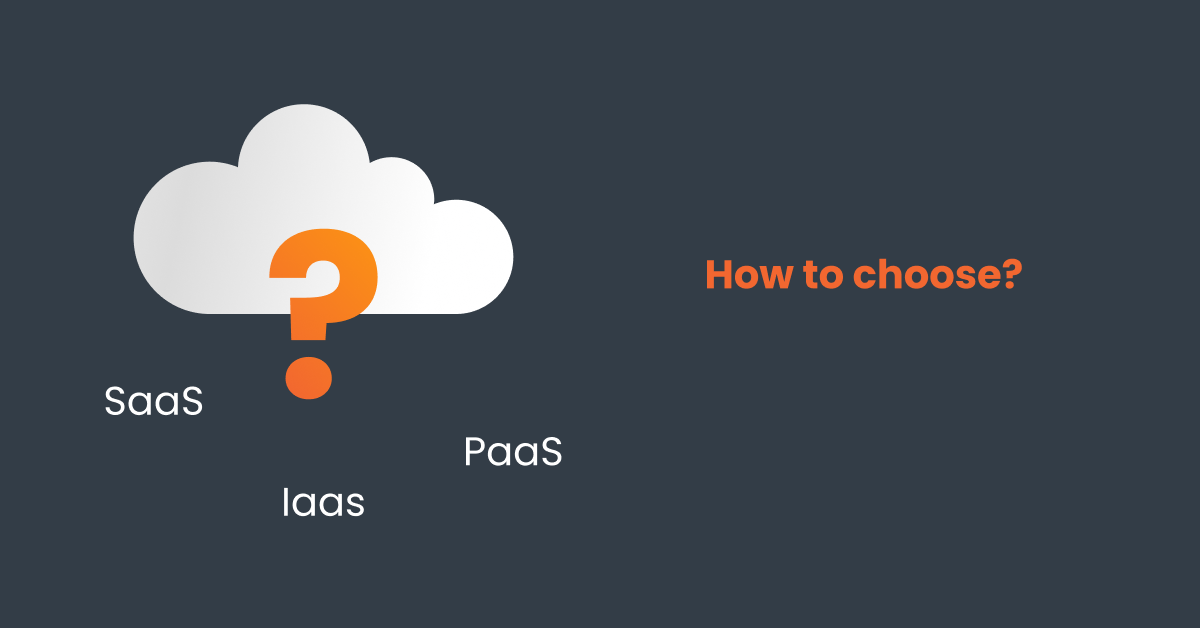On-premise software vs Cloud server: what to choose?
A company must consider many aspects before choosing between a local server, also referred to as an on-premise server, or adopting a SaaS-type cloud computing solution.
Read the article »
More and more businesses are following suit and adopting a cloud solution. Instead of spending a fortune on licensing and software installation material, cloud computing is a cost-effective and very attractive solution for many companies.

Cloud Computing is a shared storage network that allows data to be backed up remotely. It is a solution that does not require any physical installation of hardware and that allows the user to have access to all of its content from their mobile device or computer provided they have a Wi-Fi connection, 24 hours a day.
Cloud types can be public, private, or hybrid. Depending on your business’ needs, a private cloud solution may be better suited to your business than a public cloud solution, for example.
You can read our article on the advantage of adopting a cloud solution to learn more about these different types.
Note that there are also 3 different cloud models: software-as-a-service (SaaS), platform-as-a-service (PaaS), and infrastructure-as-a-service (IaaS).
To clarify and help you choose THE model that exactly fits your business’ needs, here is a quick guide presenting the characteristics, advantages and disadvantages of each of these three types of cloud solutions.
The SaaS solution, or software as a service, provides software to a business available from the Internet. It is secure software only available on the Internet and supported by an external provider.
It is a popular model for commercial companies and can be used for both start-ups and larger companies.
There may be a monthly or annual subscription fee depending on the software and provider. Updates are made directly from the Cloud, so the user does not have to worry about this aspect or even have to pay an amount to get updates.
The IaaS model offers a cloud infrastructure. It is the providers who manage and install the infrastructure, servers, hard drives, storage, and networking from data virtualization. Users manage operating systems, applications, and data.
This model allows users to pay an amount based solely on their consumption. It is not a fixed price and is subject to change according to the needs of the company.
IaaS takes the form of APIs or a dashboard, which allows companies to have control over the infrastructure, even if the database is not physically accessible to them.
It is a constantly evolving model that offers a flexible and beneficial service for companies that are experiencing rapid expansion.
The PaaS model, platform as a service, is a model essentially designed for developers. It is a platform composed of tools available on the Internet, to allow users to focus their efforts on the creation and development of applications.
It is a model accessible to several users at the same time and ideal for companies that are just starting out in the field of app creation. PaaS users will have all the resources they need to complete an application.
They will be able to carry out tests and ensure the deployment of their creation themselves. Servers and data storage are managed by an external provider and not by the user.
Although these 3 models are cloud solutions, their use varies according to the needs of a company.
The PaaS solution is a model designed primarily for developers, so that they can focus their attention on the development and deployment of apps. The IaaS solution is flexible, in addition to offering a data storage base. Finally, the SaaS model is probably the model that best meets a professional need.
One thing is certain, all of these models represent great savings for your business. Now, it’s just a matter of seeing exactly which model best suits your needs.
If your need is to improve your inventory management, why not take a look at our inventory software Hector? Plus, you can get a free demo! What are you waiting for? Try it today!
A company must consider many aspects before choosing between a local server, also referred to as an on-premise server, or adopting a SaaS-type cloud computing solution.
Read the article »
ITIL (Information Technology Infrastructure Library) is a library of industry best practices.
Read the article »For a business or organization, the expenses associated with software license purchases make for about 20% of the total spending budget in a year. It’s important to constantly monitor the proper use of these active softwares to ensure that every dollar invested is used in the right way.
Read the article »